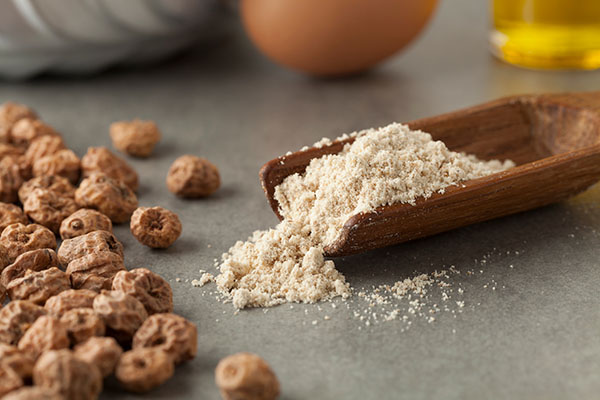
Advertisement
Celery isn’t usually the first vegetable that comes to mind when you think of something healthy and delicious, but this veggie can be turned into an impressive side dish once it’s roasted and served with blue cheese and crunchy hazelnuts.
Fiber-rich celery also offers amazing health benefits, such as improving your digestive health!
Five reasons to eat more celery
Did you know that celery belongs to the same family as carrots and parsley?
Celery leaves and stalks are edible and this veggie full of dietary fiber has a mild, earthy and slightly peppery taste.
An 80-gram serving of raw celery contains:
- 6 kcals / 24 kJ
- 0.2 g of fat
- 0.4 g of protein
- 0.7 g of carbohydrates
- 1.2 g of dietary fiber
- 256 mg of potassium
Celery can boost heart health
Celery is a vegetable with high water content, but it also contains various vitamins and minerals like calcium and potassium that are good for your heart health. Additionally, celery contains folate and vitamin K, two nutrients that are required for the formation of red blood cells and effective blood clotting.
Finally, celery is rich in flavonoids or protective plant compounds that have anti-inflammatory and protective effects on your cardiovascular system. Studies suggest that following a balanced diet full of fiber-rich foods like celery can help lower your heart disease risk.
Celery can boost your digestive health
Celery is full of both soluble and insoluble fiber, which are crucial for proper digestive function.
Findings from a 2010 animal study that examined the benefits of celery extract revealed that celery’s phytonutrient content can help protect digestive mucosa and prevent gastric ulcers.
Celery may be anti-inflammatory
As a superfood full of plant compounds with anti-inflammatory properties, you can incorporate celery into a balanced diet. Consider eating more celery if you have chronic inflammatory conditions such as arthritis.
Celery can help improve blood sugar management
Celery has a low glycemic index (GI) and is full of dietary fiber, making it the perfect veggie if you’re closely monitoring your blood sugar levels. Research suggests that celery can also help reduce blood glucose levels.
Celery can help improve your memory
According to a 2017 animal study, celery extract can help boost cognitive function associated with aging and depression. In a separate study, scientists discovered that celery extract offers neuroprotective benefits in participants with dementia and Alzheimer’s disease.
Considerations before adding celery to your diet
Celery is considered generally safe for consumption, but some people may have an allergic reaction to the vegetable. Symptoms of mild allergic reactions to celery may include an itching mouth or tongue, a runny nose, or sneezing.
Celery is high in oxalates and you should avoid it if you have kidney stones or kidney-related conditions. If you’re not used to eating celery, consult your physician to check for possible allergic interactions.
Crunchy and tasty slow-roasted celery
This recipe for slow-roasted celery is from Yvette van Boven’s cookbook “Home Made In The Oven.” It pairs crunchy celery with savory blue cheese to make a flavorful and filling side dish!
Ingredients for 4 servings:
- 2 bunches of celery, halved lengthwise, leaves coarsely chopped
- 1 heaping cup (150 g) of crumbled blue (Stilton) cheese
- 3?4 cup plus 1 tablespoon (200 ml) of vegetable stock (Acidified with 2 to 3 tablespoons of apple cider.)
- 2?3 cup (70 g) of hazelnuts, coarsely chopped
- 1 bunch of fresh parsley, coarsely chopped
- 6 tablespoons (90 ml) of hazelnut oil or olive oil
- 3 tablespoons of apple cider
- 3 to 4 garlic cloves, pressed
- Freshly ground black pepper
- Sea salt
Preparation:
- Preheat the oven to 400 F (200 C).
- Bring a large pot of salted water to a boil and blanch the celery for three minutes. Once done, scoop the celery out with a slotted spoon and let the stalks drain. Place the celery on a baking sheet with the cut sides down.
- Whisk the garlic with the three tablespoons of apple cider and hazelnut oil or olive oil, then season with salt and pepper.
- Sprinkle the celery with half of the dressing and half of the parsley, then place the baking sheet into the oven. Pour the stock over the celery and cook everything for 45 to 60 minutes, depending on the thickness of the celery, or until it’s al dente and the tips turn brown.
- Transfer the roasted celery into a serving dish and drizzle with the rest of the dressing. Sprinkle with the rest of the parsley, celery leaves, cheese and hazelnuts before serving.
Transform plain celery into a delicious side dish and boost your digestive health with slow-roasted celery.
Sources:
Advertisements







